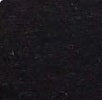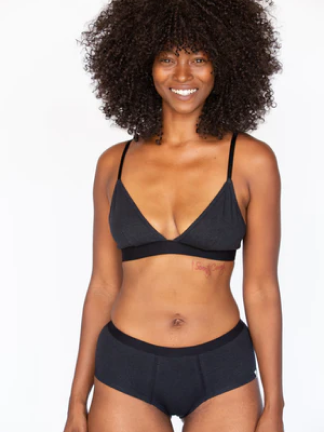










If you're not happy with your first pair of underwear after trying it on, let us know.
We'll send a new size or color, or give you a refund. No returns needed.
Looking for a way to stay happy and healthy down there without having to work too hard? While hygiene is of the utmost importance no matter what, there’s another way to keep your privates healthy every day: antibacterial underwear.
Today there are so many options for antibacterial underwear that finding the best pair can feel overwhelming. There are high-tech options made with precious metals, like panties laced with nanosilver particles. There are also all-natural choices made from sustainable fibers, like mens trunk underwear and bikini underwear both made from organic hemp!
No matter your preference, there’s something for everyone. To make it a breeze for you to choose, I’ve scoured all the top materials to find the 7 best antibacterial underwear for your health.
Antibacterial underwear is a kind of antimicrobial underwear that specifically inhibits or kills bacteria growth. Fabric can either be treated to become antibacterial or it can be naturally antibacterial. In this roundup, I’ll cover antibacterial underwear options ranging from chemical treatments, to regenerated fibers, to all-natural fabrics.
Antibacterial treatments can be applied to essentially any kind of fabric, from cotton to nylon. However, treated fabrics raise a host of concerns for both the wearer and the environment. That’s why I’m partial to naturally antibacterial and antimicrobial underwear. These options don’t require dubious chemicals to keep your privates healthy.
So which fabric is the top choice for healthy, no-stink underwear? Let’s jump right into the top 7 choices for antibacterial undies.
Silver ions make underwear antibacterial by destroying the outer layer of bacteria and therefore stopping bacterial growth in its tracks. Silver and nanosilver (read: extra small fragments of silver) are probably the most widely-used treatment for women’s and men’s antibacterial underwear.
Popular option for antibacterial underwear, making it available at many price points.
Silver is so effective at killing harmful organisms that it’s even antimicrobial.
There’s recent evidence that silver can have some pretty nasty effects on your natural bacterial balance. If you buy nanosilver underwear, you run the risk of developing silver-resistant strains of bacteria.
Washing and disposing fabric treated with silver introduces the nanoparticles to natural environments. Yikes!
Triclosan is a chemical that weakens bacterial cell membranes and eventually kills them. Underwear made with Triclosan is mightily effective at being antibacterial, but at what cost?
Can be used to treat a wide variety of fabrics, from cotton to nylon.
So effective at killing bacteria that it’s widely deployed in products like soaps and cleaners for its antibacterial properties.
There’s been major pushback against the chemical as it’s been linked to developing antibacterial resistance and hormonal changes.
A relatively harsh substance to have so close to your most delicate parts.
If these first two options have you freaked out, have no fear. Let’s foray into fabrics that are inherently antibacterial and don’t require chemical or mineral treatments.
While not entirely natural, Modal has antibacterial properties that help prevent odors. So what makes modal unnatural? Well, it's a regenerated fiber made by reconstituting beech tree cellulose pulp into fabric. The final result is a form of viscose rayon.
Extremely durable fabric that’s built to last.
A trademarked form of the antibacterial fabric, Lenzing Modal, is made using an eco-friendly production process called the Edelweiss "symbiotic" production process that produces little waste.
Harsh chemicals like carbon disulfate and sodium hydroxide are used in Modal, making the final product semi-synthetic.
Most of the common Modal manufacturers do not use Lenzing’s eco-friendly production process. At that point, Modal is essentially just rayon viscose, from start to finish.
Tencel is another regenerated fiber that makes for great antibacterial underwear. Much like Lenzing Modal, Tencel is a semi-synthetic trademarked fabric manufactured by Lenzing. Eucalyptus tree pulp is broken down into cellulose then respun into fiber.
Tencel is made using a closed-loop production process, which is great for the environment because it puts out so little waste.
Tencel is both durable and super soft, so you’ll be comfortable in your antibacterial underwear made from this sustainable fabric.
Tencel underwear can’t be made without a few harsh chemicals— amine oxide must be used during the manufacturing process, which can irritate sensitive skin.
The same harsh chemicals that are used on non-sustainable fabrics are used when making Tencel because in its natural state, Tencel doesn’t take dye well and pills easily.
So while Tencel is a pretty cool and mostly sustainable option, it’s not your best bet if you’re wary of underwear made with nasty chemicals.
If you want antibacterial undies that are completely natural and sustainable, keep reading.
Merino wool, like all wool, contains a waxy layer of lanolin that inhibits the growth of bacteria, mildew, and mold. Lanolin is a naturally-occurring fatty acid from sheep, so you don’t have to worry about harmful chemicals here.
Adored for its utter softness and supreme fabric quality.
It's very lightweight, but can effectively keep you warm in chilly temps and breathably cool when it’s hot out.
Merino wool also makes for naturally antifungal underwear, which is a great added bonus.
Typically not very durable, so you’ll have to replenish your supply of merino wool underwear more frequently. That’s not very sustainable or friendly to your wallet.
Linen is an all-natural fabric that has antibacterial properties due to its superior moisture-wicking abilities. Linen is a great choice for no stink underwear: it’s super soft, very sustainable, and completely natural unlike many of the other options available.
Super soft fabric with a loose weave that’s undeniably breathable and comfortable.
Doesn’t require harsh chemicals to be made into fabric.
A more sustainable option than synthetic fabrics and other antibacterial underwear options.
More durable that merino wool but definitely not as long-lasting as most other options on this list. Linen is prone to wrinkling in the same spots again and again, making it more likely that your linen underwear will develop holes over time.
Linen really is a wonderful option, but of course you want your antibacterial underwear to last for a long time to come. If you’re curious to know more about this sustainable fabric, take a look at our comparison of hemp vs linen.
Not only is hemp naturally antibacterial, but it’s also naturally resistant to other pesky problems that can contribute to funky undies. That’s right, hemp fights off mold, mildew, and even ultraviolet light. Also worth mentioning, hemp is on the top of the list as one of the most sustainable fabrics.
Hemp is an all-natural and sustainable option for women’s and men’s antibacterial underwear.
More durable than merino wool or linen and still totally natural.
Hemp doesn’t wrinkle in the same spots like linen does, plus hemp fibers are the longest and strongest natural fibers in the world.
Relatively new as a sustainable underwear fabric, so not as widely available as other options on this list. But if you’re reading this, you’ve come to the right place for everything from hemp trunks to hemp thongs.
Want proof that hemp is naturally antibacterial? I’ve got some pretty compelling lab results.
Click Here to View Full Lab Test Report
No need to panic if this is confusing to you! Let’s parse this out. These lab results show the before and after for bacteria growth on both WAMA’s hemp underwear and standard cotton fabric.
You can see that Staph bacteria (the culprit behind Staph infections) was reduced by an incredible 81.75% on hemp fabric after just 24 hours. Cotton, on the other hand, showed an increase in bacteria. No good!
The next section is also good news for hemp. You can see that K. pneumoniae bacteria (responsible for nasties like pneumonia, UTIs, meningitis, and more) was inhibited far more by hemp than by cotton. It only grew from a bacteria count of 126,000 to 11.1 million, whereas in cotton it grew from 165,000 to a whopping 335 million. When it comes to antibacterial underwear, hemp really is the ultimate all-around choice.
Wearing antibacterial underwear is one of the easiest ways to stay healthy down there every day. The best antibacterial underwear not only prevents foul smells and nasty bacteria growth, but it should also be good for the environment. The fashion industry is traditionally horrendous for the earth, producing 10% of the world’s carbon emissions. Protect your privates naturally by choosing antibacterial underwear that’s eco-friendly and sustainable.
You know my top pick: hemp underwear. Whether you’re partial to boy shorts underwear or mens briefs, choosing hemp means you’re looking out for both yourself and the world around you.
What kind of antibacterial underwear have you tried before? Let me know in the comments!
Get updates on restocks, new color and size releases, and upcoming product launches. You’ll also get a 15% discount on your first order of hemp underwear.


